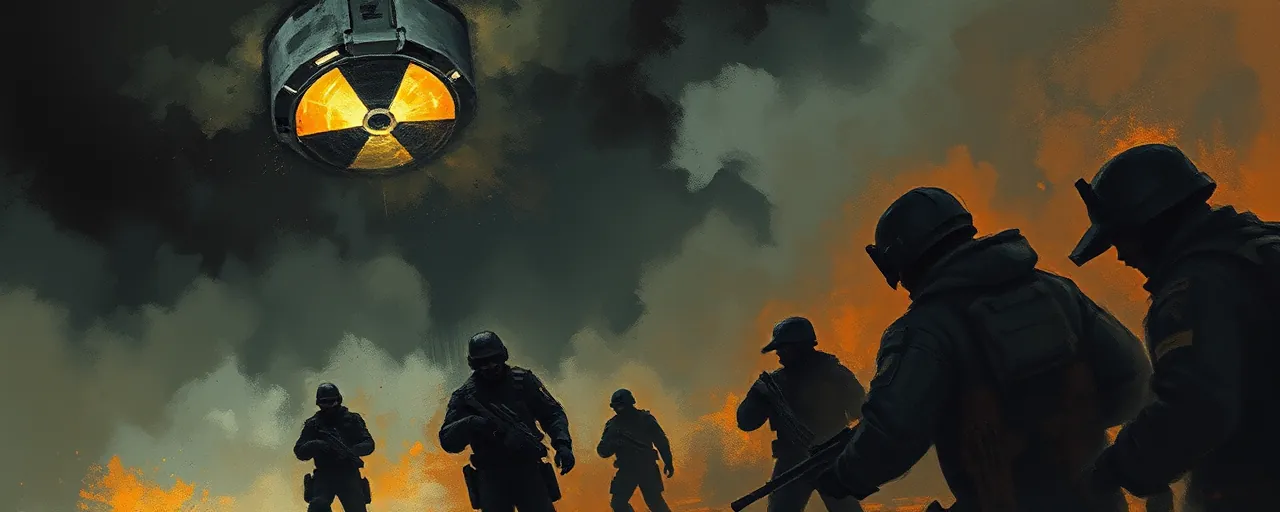A Nation Under Siege
The United States faces an unrelenting barrage of threats, from bioterrorism to nuclear smuggling, and the stakes have never been higher. On March 27 and 28, David Richardson, Assistant Secretary for the Department of Homeland Security’s Countering Weapons of Mass Destruction Office, took to Chicago to rally state and local leaders behind two vital programs: BioWatch and Securing the Cities. These aren’t just bureaucratic checkboxes; they’re the backbone of our defense against invisible killers lurking in the air and shadowy figures plotting radiological chaos in our cities. With enemies both foreign and domestic growing bolder, these initiatives stand as America’s first line of protection.
Richardson’s visit wasn’t a photo op. It was a clarion call to double down on what works. BioWatch, running nonstop in over 30 major metropolitan areas, sniffs out airborne biological attacks before they spiral into catastrophe. Securing the Cities arms local agencies with the tools to stop nuclear and radiological threats dead in their tracks. In a world where climate change breeds new diseases and rogue scientists tinker with synthetic pathogens, walking away from these programs isn’t just naive, it’s suicidal.
BioWatch: The Unsung Hero We Can’t Afford to Lose
Since its inception in 2003, BioWatch has been the silent sentinel guarding our skies. Picture a network of scientists, emergency managers, and law enforcement working around the clock to detect a bioterrorist strike before it claims lives. That’s BioWatch in action, and it’s saved us from disaster more times than we’ll ever know. Critics whine about false positives and outdated tech, pointing to the $80 million annual price tag as if national security comes cheap. But let’s get real: the cost of doing nothing far outweighs the investment in keeping this program alive.
Sure, BioWatch isn’t perfect. Efforts like Biodetection 21 stumbled, and the system’s limited pathogen range needs a serious upgrade. Yet, scrapping it, as some naysayers suggest, ignores the reality of today’s threats. Climate-driven diseases like H5N1 and AI-fueled pathogen engineering aren’t science fiction; they’re here. Richardson’s push in Chicago to bolster BioWatch with next-gen tech isn’t a luxury, it’s a necessity. Pairing it with DARPA’s brain trust could finally deliver the real-time detection we need to stay ahead of the curve.
Securing the Cities: Locking Down the Nuclear Nightmare
Then there’s Securing the Cities, a program that’s been fortifying urban strongholds since 2007. From New York to Chicago to Los Angeles, STC equips local cops and first responders with cutting-edge radiation detectors, training them to spot smuggled nuclear materials before they detonate. With $300 million poured into 13 high-risk regions by 2023, this isn’t some half-baked experiment; it’s a proven shield against radiological terror. Richardson’s talks with Chicago’s STC crew zeroed in on what’s working and where the feds can step up, proving this program’s got legs.
Detractors grumble about staff turnover and training hiccups, as if perfection’s the benchmark for survival. Reality check: the portable detector market’s booming, set to hit $4.2 billion by 2033, because the threat’s not shrinking. STC’s wearable tech and regional coordination mean a dirty bomb in Houston or a smuggler in Seattle doesn’t stand a chance. With the 2026 World Cup looming, letting this program falter isn’t an option; it’s a death wish.
The Left’s Blind Spot: Dismissing Real Threats
Opponents, often cloaked in academic jargon or bleeding-heart idealism, argue we’re overreacting. They’d rather gut BioWatch and STC, claiming the odds of an attack are slim or the tech’s not flawless. Tell that to the victims of the 2001 anthrax letters, or the cities that’d be ash if a nuke slipped through. Their solution? More studies, more delays, while the Department of Homeland Security’s CWMD Office pours $418 million in 2025 into keeping us safe. The disconnect’s glaring: they’d trade tangible security for utopian fantasies, leaving us exposed to enemies who don’t play by their rules.
The Path Forward: Strength, Not Surrender
Richardson’s Chicago mission laid it bare: BioWatch and STC aren’t relics, they’re lifelines. The CWMD Office isn’t messing around, syncing up with FEMA, DARPA, and local heroes to outpace the threats. Historical wins, like the Cold War’s detection breakthroughs, and modern leaps, like networked radiation sensors, show we’ve got the know-how to win. What we need now is the grit to see it through. Shutting down these programs, as some suggest, hands victory to the bad guys on a silver platter.
America’s not invincible, but we’re not defenseless either. BioWatch and STC prove we can fight smart and tough. Bolster them with fresh tech, tighter coordination, and unwavering resolve, and we’ll keep the homeland safe. Anything less is a gamble we can’t afford to take.
